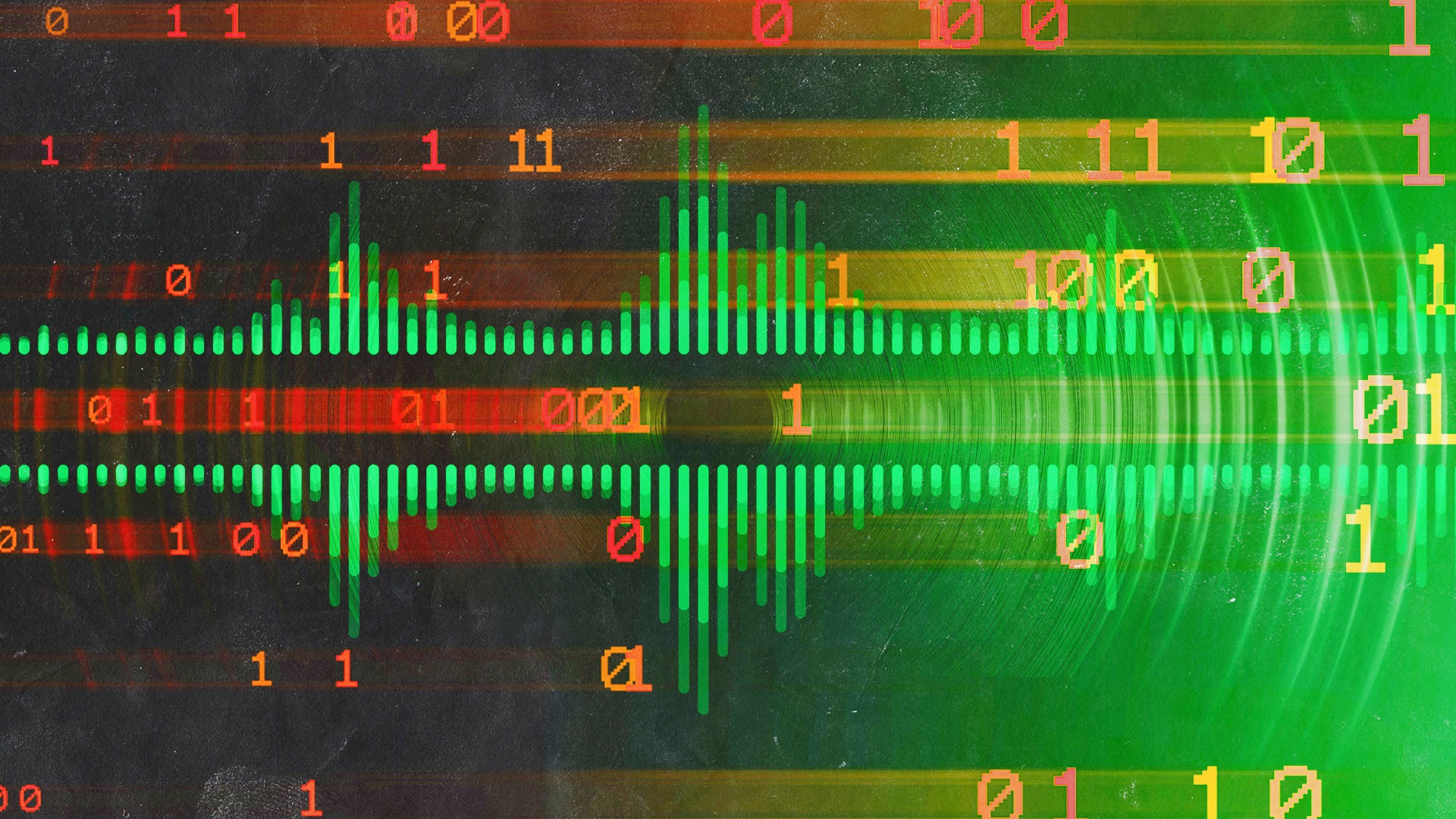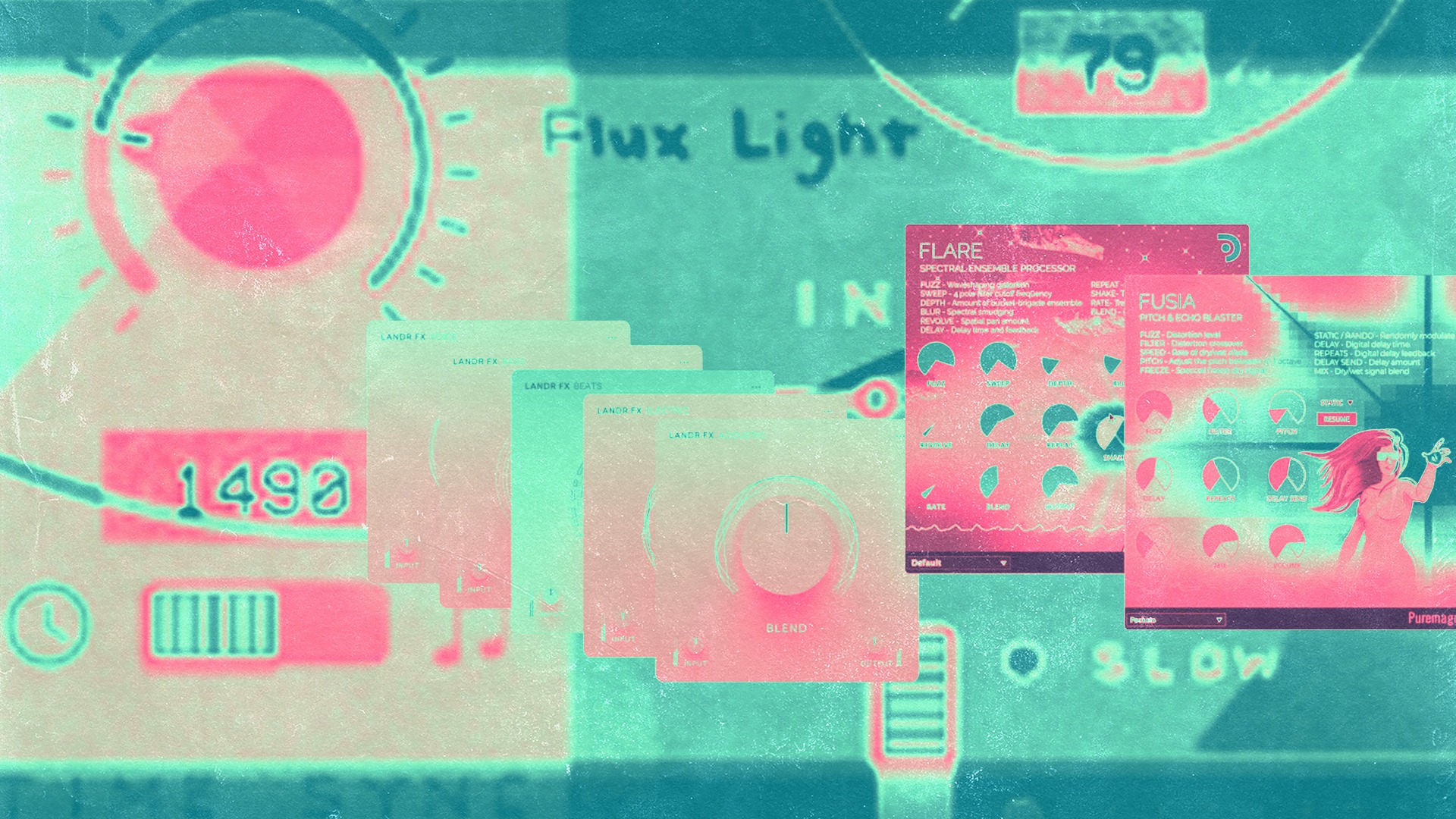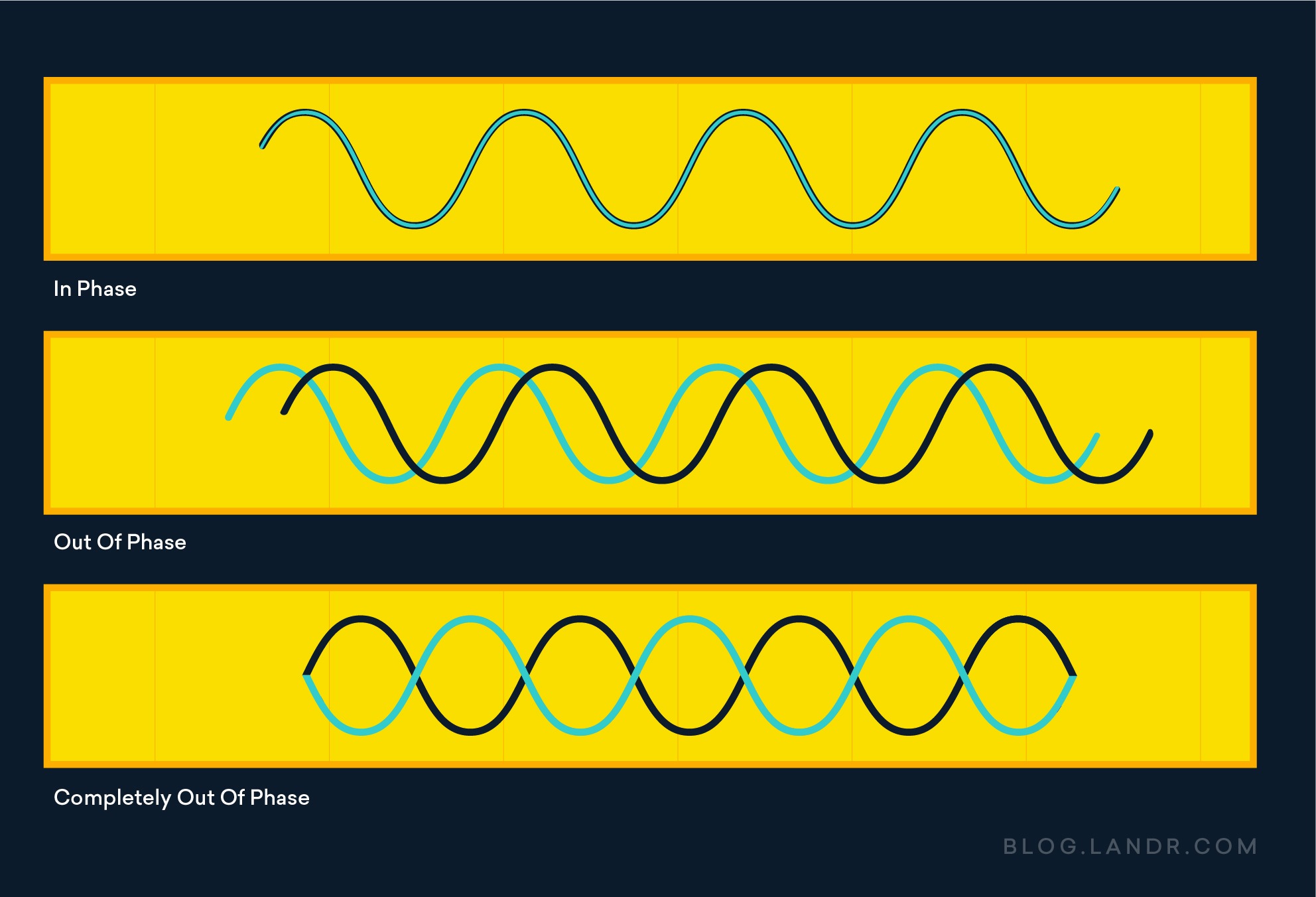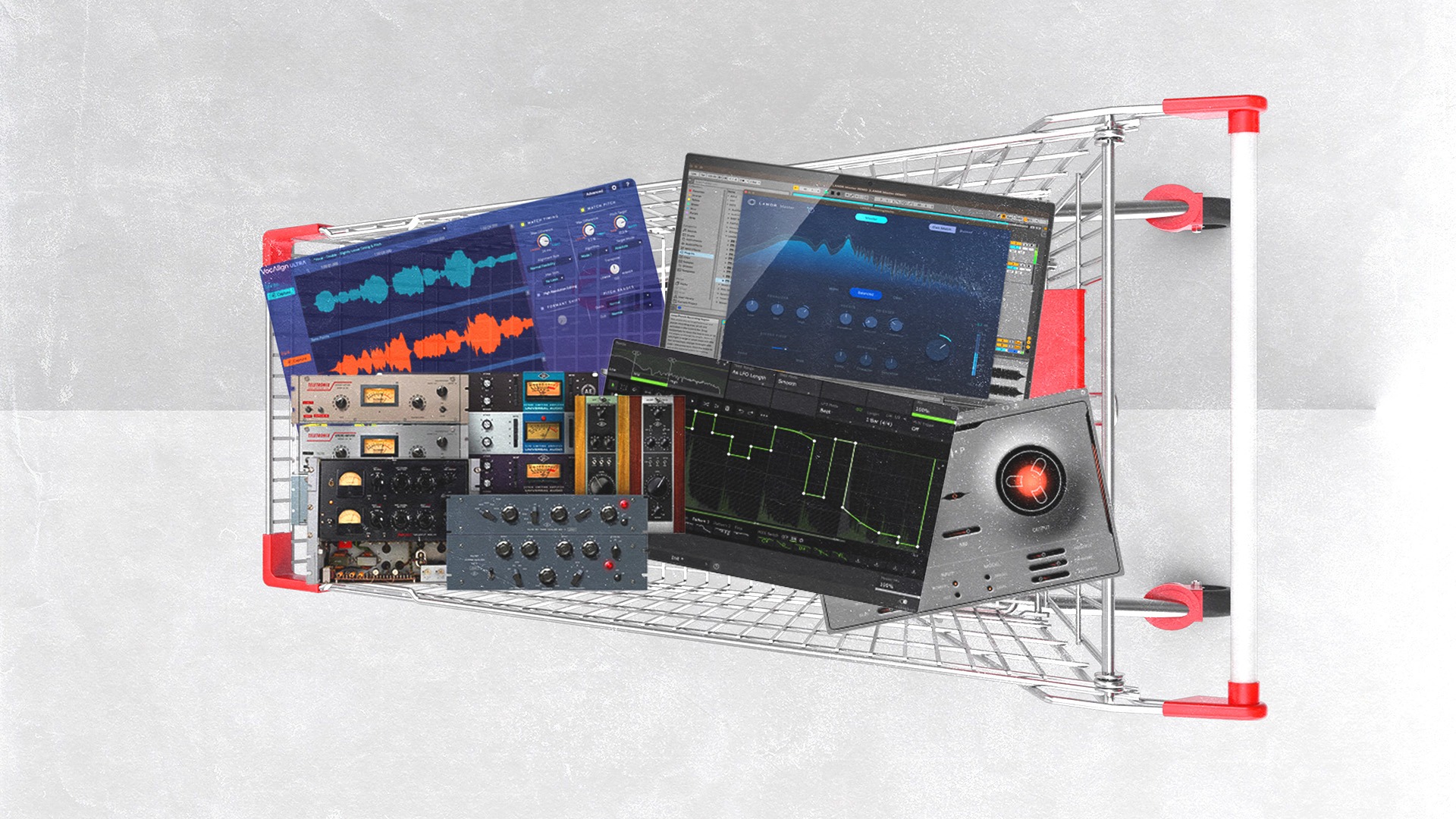
Modulation Effects: What’s the Difference Between Flanger vs. Phaser, Chorus and Others?

Modulation is one of the most important effects in music. It’s used all the time on so many different instruments and genres.
Whether it’s a psychedelic phaser on an electric piano, a whooshing flanged lead guitar line, or a warm and chorussy bass part, modulation effects add depth, movement and swirl to any track.
But modulation effects each work differently, and understanding how the effects work can help inform how they’re best used.
So let’s dive into how each kind of modulation effect can manipulate an audio signal, the reasons behind the sound they produce and how they’re best used.
We’ll also take a look at some great plugins to create each effect in your DAW!
Ready to learn everything you need to know about modulation effects? Let’s dive in.
What is a modulation effect?
Modulation effects do what their name suggests — they modify an audio input signal to create a processed sound that constantly changes at a variable rate.
Audio modulation is done in two ways.
The first is by splitting an audio signal, modifying one of the split signals, then mixing the modulated audio signal back into the unaffected signal.
By mixing the unaffected audio signal with an audio signal that is delayed, out-of-phase or detuned, producers can create sounds that have a climbing, swirling or acoustic-sounding movement due to destructive interference caused by comb filtering and phase cancellation.
The second way to modulate audio is to apply variation in volume and pitch with a low-frequency oscillator (LFO) on a single audio input.
These effects are known as tremolo and vibrato.
Audio phase explained
Because flanger, phaser, and chorus all play around with the phase relationships between two identical audio signals, it’s important to understand what audio phase is to know how each effect works.
All audio oscillates in cycles that can be compared to waves — they have a starting point and a maximum positive and negative amplitude at the peak and trough of each sound wave.
The greater the distance between the peak and trough, the louder a sound will become.
In recording and with phase modulation, an audio signal goes out-of-phase when it is shifted slightly out of time with the rest of the recording or its doubled signal.

In the graph a simple sine wave shows various audio phases. The middle out-of-phase wave show's the kind of phasing that causes the destructive interference caused by phasers.
When a doubled audio signal is shifted out of time, it will cause destructive interference with the original audio signal.
This occurs in recording when multiple mics are used to record the same sound, and it’s used to create modulation effects.
If an audio signal is perfectly out-of-phase, it will cause phase cancellation, meaning that the sum of the two audio signals will cancel each other and produce no sound.
But if an audio signal is only slightly out-of-phase, say 1-20 milliseconds, this will cause comb filtering inside the combined audio signals.
The comb filtering effect creates the swirling sound of modulation effects like flanger, phaser and chorus.
Modulation effects and their differences explained
Modulation techniques for affecting a split signal are typically applied in three ways: delaying the audio signal, using all-pass filters that move the signal very slightly out of phase or pitch bending to slightly detune the signal up and down.
These three techniques are called flanger, phaser and chorus, respectively.
Let’s take a look at each of these techniques in more detail.
The flanger effect
The flanger effect is one of the earliest and most popular modulation effects.
It was discovered initially by Les Paul in the 1950s when he experimented with a double-tracked guitar playing out of two separate tape reels.
By delaying one of the doubled recordings ever so slightly, Les Paul produced a whooshing effect that sounded like a jet engine taking off.
However, the term “flanger” was coined by Beatles producer George Martin, naming it after the outer rim of a single tape reel, which is called the flange.
The flanger effect splits an audio signal into two signals, delays one of the signals by a short amount of time (four to twenty milliseconds), then the delayed and unaffected signals are mixed back together.
Rather than create an echo effect, the imperceptibly out-of-time signal causes certain harmonics between the two signals to phase cancel, creating that whooshing flanger sound that resembles a jet engine taking off.
The more delayed the signal, the more intense the phase cancellation effect becomes.
Today, flangers come in all shapes and sizes. You’ll find them most commonly offered in guitar pedal format, since flanging is a beloved guitar effect in classic, psychedelic and indie rock.
But there are many plugins and rack hardware units that offer the effect.
Advanced reading on flanger vs. phaser effects:
- Sound on Sound: Q. What’s the difference between phasing and flanging?
- Reddit: Looking for a Flanger Plugin with full rich sound
🧠 Hot tip
The phaser effect
Like the flanger effect, the phaser effect splits input audio into two signals.
But instead of delaying it slightly, the audio passes through a series of all-pass filters intended to put the audio out of phase.
Once the slightly out-of-phase audio is mixed back into the original audio signal, the notches in the affected signal created by filters produce the subtle, warbling effect that phasers are known for.
Phaser is often more subtle than flanger, forgoing that jet engine, whooshing sound that flanger is famous for.
Instead, a phaser is great for adding subtle warbling, swirling movement that doesn’t put the split audio so exactly out of phase as to cause a distinct whooshing sound.
So if you’re looking for a subtle, but swirly mix of guitar, synth, vocal or bass tone, the phaser effect is a good pedal or plugin to grab.
Advanced reading about the phaser effect
- Sound on Sound: How Phasers Work
- Reddit: People, why do you use a phaser for?
🧠 Hot tip
The chorus effect
The chorus effect is very similar to flanger in that it takes a split audio signal and delays it slightly.
However, to create a chorus effect, the delay in the audio signal is instead caused by a slight detuning of the audio input signal.
This modulation of the input signal creates a sound that’s similar to the natural chorus sound created when the same two notes are played together on different instruments.
This is where the name for chorus effect comes from, it makes an audio input mimic the natural chorus sound that occurs when two unison notes are played together on acoustic instruments.
Advanced reading on the chorus effect
- Boss Pedals: Five Creative Ways to Use a Chorus Pedal for Guitar
- Reddit: A Question about creating a true chorus effect (multiple instruments)
🧠 Hot tip
Other modulation effects
Of course, not all modulation effects play around with differences in phase between two audio signals.
Audio modulation refers to any change made to an audio signal, so adding an oscillating change to volume or pitch to an audio signal, as is the case with tremolo and vibrato, is also a form of audio modulation.
The tremolo effect
The tremolo effect is a great tool that reduces an audio signal’s volume by a small amount with the help of a low-frequency oscillator or LFO.
This creates a waving, shimmering effect that sounds great on instruments like guitar or electric piano.
By using an LFO, producers control the rate or speed at which the gain reduction is applied and the depth or how much the volume is lowered.
It’s a relatively simple effect that can create interesting soundscapes, especially on guitar. It’s most commonly used in country and rock music.
🧠 Hot tip
The vibrato effect
Similar to tremolo, the vibrato effect modulates the actual pitch of a single audio signal.
Its name comes from the vibrato technique used by string players who manually bend the pitch of a string up and down with their fingers on the fretboard.
Vibrato applies minimal adjustments in pitch with the help of an LFO, giving the audio signal a sound that goes in and out of tune at a desired rate.
It can create quick movements that sound bubbly and psychedelic, but at slower rates it can mimic the warbling sound of cassette tape machines that were notorious for going in and out of tune.
🧠 Hot tip
Set phaser to stun your audience
Modulation effects offer a powerful way to manipulate audio signals and add depth, movement, and texture to music.
Understanding the differences between effects like chorus, flanger, phaser, tremolo, and vibrato allows producers and musicians to make informed choices and achieve specific sonic goals.
From the jet-engine whoosh of a flanger to the subtle warble of a phaser, or the pulsating volume changes of tremolo, each effect has its unique characteristics and applications.
Experimenting with these techniques, either through hardware pedals or software plugins like those available with LANDR Studio, opens up a vast creative landscape for shaping and enhancing audio.
Whether you’re seeking a classic vintage sound or a modern, experimental vibe, mastering modulation effects is essential for any music creator looking to elevate their productions.
Gear guides, tips, tutorials, inspiration and more—delivered weekly.
Keep up with the LANDR Blog.






